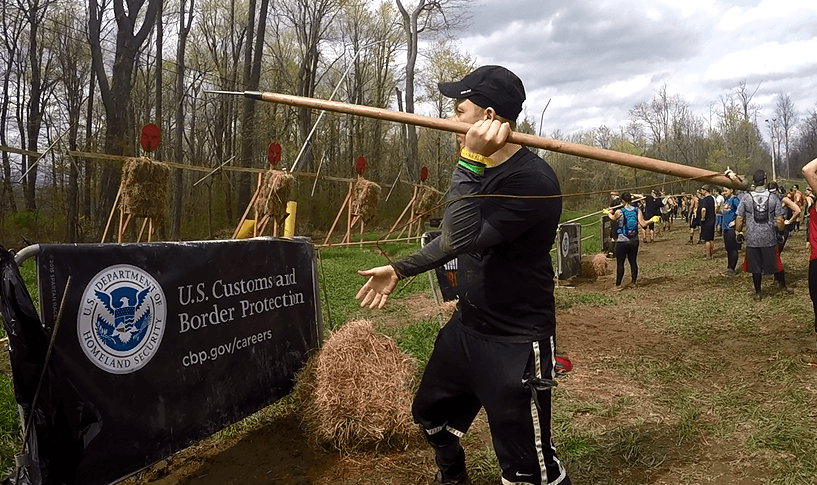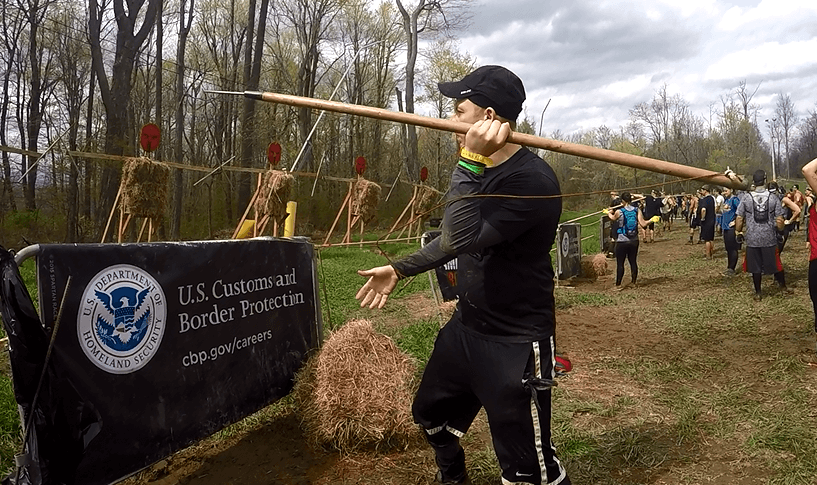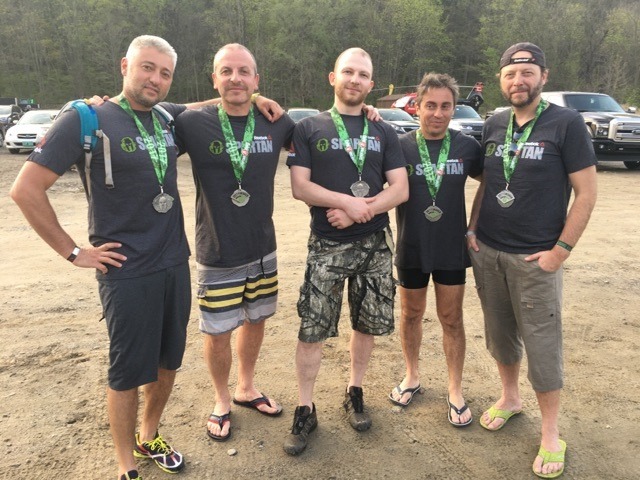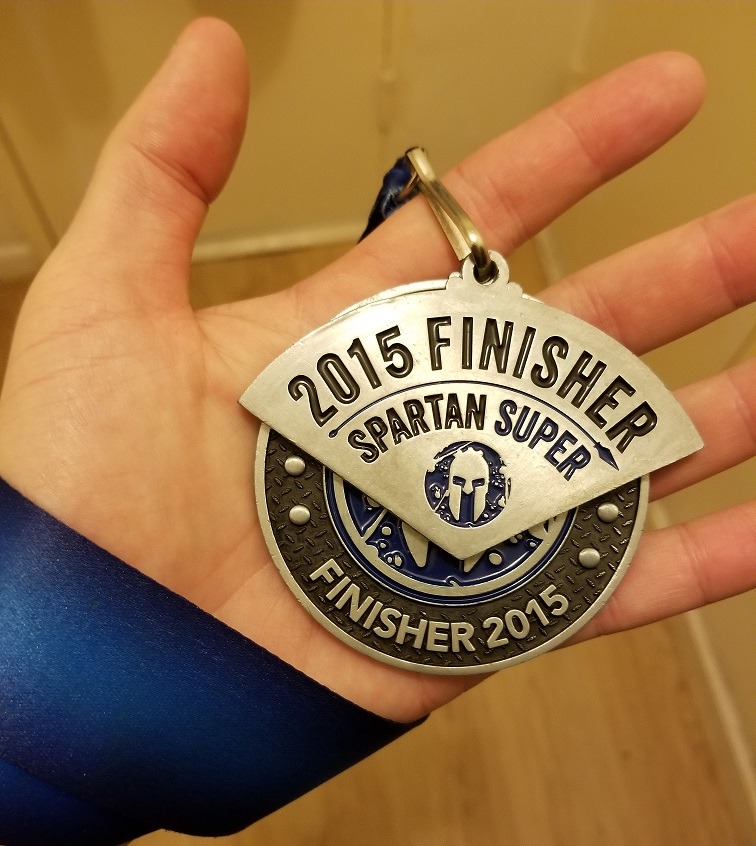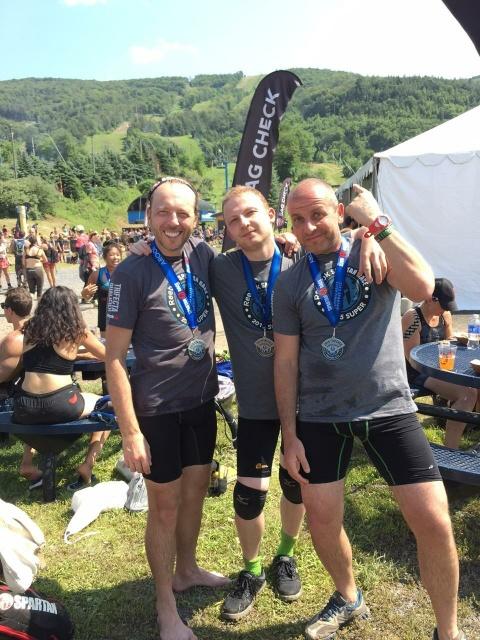The rope climbing obstacle in the Spartan Race is one of the most difficult, one I’ve seen some of the strongest people fail at in these events, including myself.
Unfortunately, there’s nothing regular about this obstacle. Not only do you have to have crazy upper body strength to climb it, but here are:
4 very real risks you have to conquer to beat the rope climb in the Spartan Race:
- Risk 1: There’s also cold and very, very dirty water you have to enter.
- Risk 2: It’s also incredibly wet because throughout the day, with the different waves of people passing through it, a lot of them fall into that water, then try to re-climb it, falling again, but the way the rope is designed, it almost absorbs all that water, making it constantly slippery.
- Risk 3: This obstacle isn’t the first one on the course. Chances are you’ll run into it around mid way or close to end of the race by which time, you’re exhausted from the other parts of the race.
- Risk 4: And of course there’s also the danger of falling from a large height, something which I have witnessed and depending on how you can reach it, if you slip, obviously you can fall very fall. Some Spartan Races like the Beast I ran, have begun to use mats instead of water to soften falls, but it’s still dangerous.
That slipperiness plus the grip strength you need and the exhaustion you’ll accumulate are all going to make this a very tough challenge so if you want to beat it, you have to be ready to face those 4 things and that’s how you’re going to beat this challenge!
Mastering the climb and reducing the risk of injury:
Risk 1’s solution:
The cold, dirty water isn’t really a problem if you’re doing a Spartan Race in the Spring or Summer because in those seasons, when you get to it, you’re going to be overheated and sweaty so entering anything cold will feel great despite is being super dirty.
The only risky thing is catching a cold if you’re doing it in the cold seasons or catching some sort of infection if you’re cut. To avoid that, you need to try and not be cut during the race but that’s VERY hard considering how difficult the Spartan Race is. So to beat this risk:
- Make sure you’re carrying supplies in something like a hydration pack that are anti-septic so when you finish this obstacle, if you have a cut, you can quickly reduce any risk of infection.
- Wear gear that protects your skin! More protective gear means less chances your skin gets cut! See the best protective gear you need to wear for the race!
Risk 2 solution: Tips on how to actually climb the rope!
- You won’t be able to avoid the slippery rope problem so you need to be ready to beat it:
- Learn to climb a regular rope at a local gym. Every obstacle you do in the race should be prepped for beforehand. If you don’t have any of these at your gym, practice ANY upper body exercises, especially pull ups!
- When actually doing it, make sure your elbows are tucked in. Many people climb it with their elbows out, looking as though they are some kind of fitness model posing. This puts tremendous strain on your elbows! You can really injure them doing this so tuck them in, when you practice and when you’re doing it on race day.
- For beginners, use your feet to give your hands a break. Even advanced people are going to get tired from just using their hands. Your feet will provide an extra “lift” when you try it.
- Since it will be slippery, you should get a pair of gloves that will help maintain your grip (grab excellent gloves especially designed for mud runs!). When practicing this outside the race, learn to climb it without gloves so you improve your grip strength!
- The J HOOK will save you…
How to do the J Hook when you climb the rope (I will include real pictures soon):
- Begin by holding onto the rope with your hands as high as you can so when you let your feet go, your body will be slightly hanging off the ground.
- Then take one of your feet, move it behind the other, and then swing it underneath it. So if my right foot and put it behind the left, that right foot would also swing underneath the left.
- That same right foot that swings underneath has to also grab the rope and tuck it above the left foot.
- Then take the right foot that’s holding the rope and tuck it between it and the left one. Now it’ll be tucked in place and all the weight is on your left foot.
- This is the J hook and when you have this position, you can ease up on the pressure on your hands, giving them a rest.
- Then, when you’re ready, let go of the J hook, and pull yourself up higher, then secure the J hook again. Every J hook is like a checkpoint until you reach the top and even when you go down.
- All you’re doing with this J hook is each time you get higher and higher on the rope and get tired, this technique helps your body and hands relax before you’re ready to keep going.
- Practice the J hook at the gym if possible to see how it feels when you have it secured correctly. Then you can feel out how much grip you can ease up on so you can do it during the race.
The J hook isn’t as easy to secure on a wet rope vs a dry one, so be ready to depend on your grip strength while you try securing it. My uncle had that issue on the Spartan Race where he tried to get it, but couldn’t because his foot kept slipping. You need to keep calm if you slip and patiently try to re-secure it.
Risk 3 Solution:
Since you will probably be tired when you reach this obstacle, the best thing to do is make sure you relax your shoulders when you’re not going through obstacles that require that upper body to work as well as your hands.
If you are tired when you get to this challenge, you should relax for a few minutes, stretch out your hands, feet, and shoulders before going through it.
Risk 4 Solution:
The best prevention from falling of this challenge is really having a secure, strong and long grip (with gloves) and keeping it secure with the added J Hook in place.
If you do fall, the depth of the water isn’t that deep so make sure you fall with your feet first and when you land bend them and fall backwards or forwards. That will depend on where the momentum pushes you. If it pushes you forward, go forward, if it pushes you backwards, fall backwards and you will be fully submerged in the dirty water!
If you’re doing this obstacle completely vertically, this is how you’ll fall if you lose your grip. I have seen people do this challenge upside down and sideways. It is very risky. If they fall at that kind of angle, they can hurt their backs. Fall vertically and feet first if it happens and don’t forget to bend your legs!
Note: Sometimes the rope can be dry and hard to hold on to as well.
With the last mud run I did, which was the Spartan Beast, I had a very difficult time climbing the rope. I had expected it to be slippery and in the water, but was met with a surprise:
It was the last obstacle on my event, but it was in a totally dry environment with mats. Not only that, but the actual rope wasn’t wet at all. Instead it was dry but felt as though powder was covering it. And it was nearly impossible to hang onto it. MOST of the people who were trying to climb it fell.
Grip strength is definitely the #1 thing you need to train for the rope climb, but I would also add you need reps on obstacles like this before the race begins to get used to the feeling of what it’s like to hang onto the rope. It’ll mentally prepare you, which I did not do, and this was why I did not complete this obstacle.

